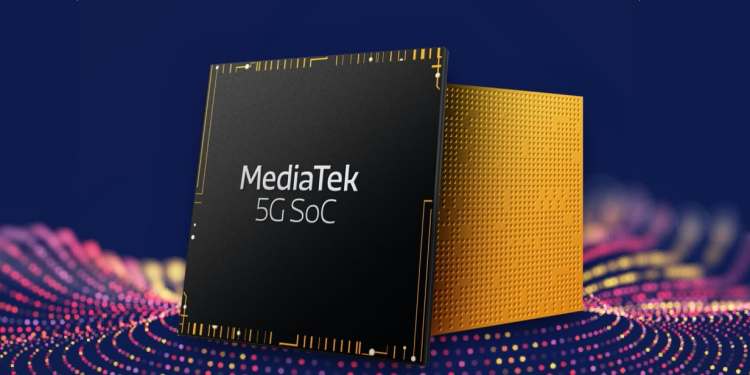In November 2019, MediaTek officially named its first 5G system-on-chip (SoC) Dimensity 1000, promising flagship-class CPU, AI, and cellular performance in a one-chip design. Today, the company is announcing the Dimensity 800 series as a similar but not identical alternative, designed specifically for midrange and mass market 5G phones that will hit the market later this year.
Like Dimensity 1000, the 800 series will use a 7-nanometer octa-core CPU based on ARM processors, but drops the four “big” cores from ARM’s 2.6GHz Cortex-A77s down to 2.0GHz prior-generation Cortex-A76s, paired with a similar set of four 2.0GHz Cortex-A55s. MediaTek says that the unspecified GPU will have “four cores of Dimensity 1000-class GPU IP,” which suggests something at least a little different from the ARM Mali-G77 found in the higher-end processor. Initial specs bear that out: Dimensity 800 supports Full HD+ displays at up to 90Hz, compared with Dimensity 1000’s 120Hz peak.
A bigger step down is in the AI department, where Dimensity 800’s APU 3.0 AI processing unit will drop from 1000’s 4.5 trillion operations per second (TOPS) down to 2.4TOPS, and from six cores down to four. The design, however, is said to be “more efficient and more powerful for FP16,” enabling the newer chip to remain capable when used for AI camera floating point operations. Unlike Dimensity 1000, which supports up to 80-megapixel camera sensors, Dimensity 800 supports only 64MP sensors, but includes both AI-aided photo HDR and new 4K video HDR, as well as four concurrent cameras.
On the 5G side, Dimensity 800 continues its predecessor’s support for 2G through 5G networks using sub-6GHz frequencies, and similarly omits millimeter wave functionality. While the absence of millimeter wave support didn’t stop Intel from picking MediaTek as its modem supplier for upcoming 5G PCs, that technology will be increasingly found in global 5G networks for the highest-speed data communications.
June 5th: The AI Audit in NYC
Join us next week in NYC to engage with top executive leaders, delving into strategies for auditing AI models to ensure fairness, optimal performance, and ethical compliance across diverse organizations. Secure your attendance for this exclusive invite-only event.
Dimensity 800’s integrated 5G modem includes two-carrier aggregation, dynamic spectrum sharing, and Voice over New Radio support (the 5G sequel to 4G’s Voice over LTE). MediaTek continues to tout Dimensity 800’s integrated modem as enabling a “more power efficient design than other solutions in the market,” though it isn’t yet quantifying the actual performance delta with Qualcomm’s closest rival, the new Snapdragon 765.
Competition in the midrange 5G phone market is likely to become heated throughout 2020 thanks to the increased availability of MediaTek, Qualcomm, and Samsung options. Snapdragon 765 is promising up to 5.5TOPS in AI performance with faster CPU and GPU cores than the Dimensity 800, while Samsung introduced the Exynos 980 as a single-chip 5G solution with support for up to 108MP cameras. Consequently, MediaTek’s solution may wind up as a competent but lower-midrange 5G solution, focused on carriers without near-term millimeter wave ambitions, and smaller smartphone brands.

